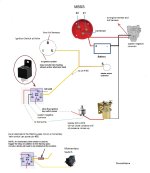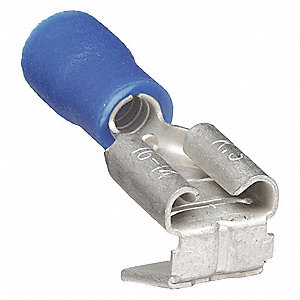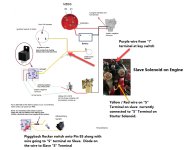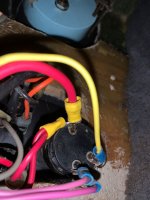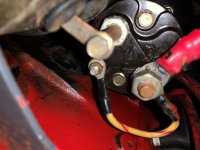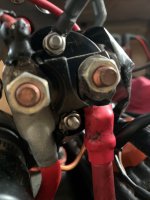RicardoMarine
Gold Medal Contributor
All of this is relatively simple!
Your goals:
#1..... Find a way to operate the electric fuel pump once engine oil pressure is achieved.
#2..... Find a way to momentarily operate the electric fuel pump prior to engine oil pressure.
Option for #1:
N/O low oil pressure switch in the loop.
Options for #2:
Start by-pass circuit.
or
Momentary helm switch.
Questions:
I know that Mark and I do not agree on the use of a relay. However, consider this;
Do you want to place an additional 4 or 5 amp load directly on your ignition circuit?
(keep in mind the length of the engine harness/hull harness (from helm to engine location) the small size of this circuit (length = resistance) and that there is an engine harness/hull harness connector (also adding resistance) in the path.)
Do you want to use a relay and NOT have the additional 4 or 5 amp load directly on the ignition circuit?
(the current required to trigger a relay is extremely low)
If both the start-by-pass circuit and momentary helm switch circuit are used, a diode would be installed in the S circuit to avoid any back-feed that would activate the starter motor. In other words, you do not want the momentary helm switch to activate the S circuit while simultaneously triggering the relay.
That would defeat the purpose of the momentary helm switch function.
Take a look at my updated schematic.
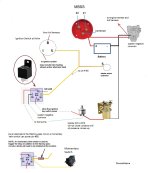
Your goals:
#1..... Find a way to operate the electric fuel pump once engine oil pressure is achieved.
#2..... Find a way to momentarily operate the electric fuel pump prior to engine oil pressure.
Option for #1:
N/O low oil pressure switch in the loop.
Options for #2:
Start by-pass circuit.
or
Momentary helm switch.
Questions:
I know that Mark and I do not agree on the use of a relay. However, consider this;
Do you want to place an additional 4 or 5 amp load directly on your ignition circuit?
(keep in mind the length of the engine harness/hull harness (from helm to engine location) the small size of this circuit (length = resistance) and that there is an engine harness/hull harness connector (also adding resistance) in the path.)
Do you want to use a relay and NOT have the additional 4 or 5 amp load directly on the ignition circuit?
(the current required to trigger a relay is extremely low)
If both the start-by-pass circuit and momentary helm switch circuit are used, a diode would be installed in the S circuit to avoid any back-feed that would activate the starter motor. In other words, you do not want the momentary helm switch to activate the S circuit while simultaneously triggering the relay.
That would defeat the purpose of the momentary helm switch function.
Take a look at my updated schematic.

Last edited:


